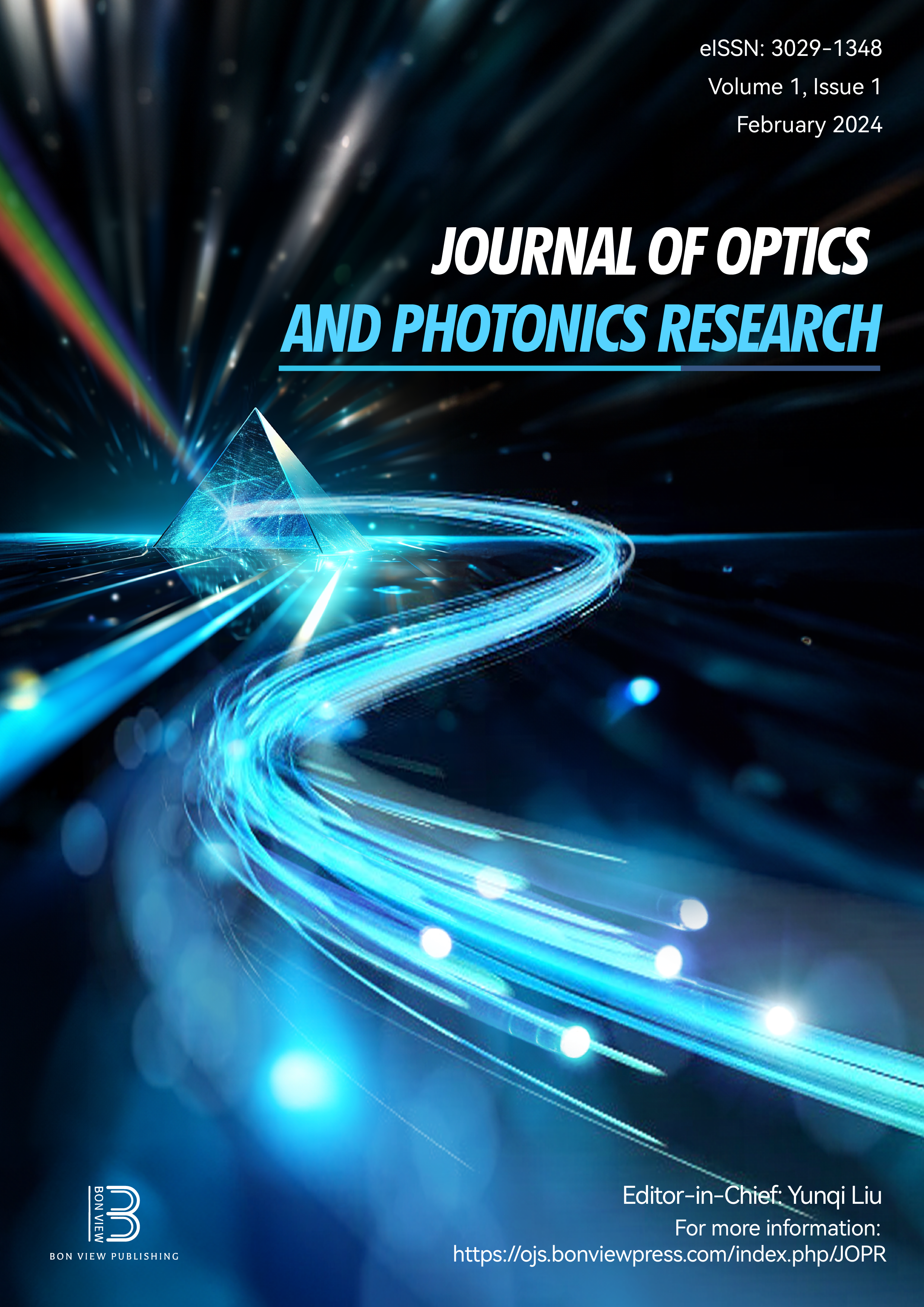Bright and Dark Soliton Pulse in Solid Core Photonic Crystal Fibers
DOI:
https://doi.org/10.47852/bonviewJOPR32021585Keywords:
photonic crystal fibers, nonlinear Schrodinger equation, group-velocity dispersion, bright soliton, dark solitonAbstract
The nonlinear Schrodinger (NLS) equation was utilized to conduct an analytical study on the soliton control in homogeneous photonic crystal fibers (PCFs) within both the normal and anomalous dispersion regimes. The split step Fourier method and MATLAB computation were used to generate the analytical soliton solutions for the NLS problem. The bright and dark soliton can be controlled by the group-velocity distribution (GVD). It is capable of demonstrating the fabrication of a fully coherent PCF. Moreover, dark soliton pulses have been seen in PCF in the typical dispersion domain. Here, we present the bound states of bright–dark soliton pairs that are mutually confined in a PCF. Solitons are produced when two modes with opposing dispersions are replanted. One laser operating in the anomalous dispersion domain produces the bright soliton, while the second laser running in the normal dispersion phase produces the dark soliton by normal dispersion cross-phase modulation with the light soliton. The results unequivocally point to a novel method of generating dark soliton pulses. Capturing both bright and dark solitons can produce light states that, interestingly, have a consistent power output and spectrally resemble a frequency comb. These results may have use in soliton states in atomic physics, ultrafast optics, frequency comb technologies, and telecommunications systems. A radically new approach to the stabilization of powerful wave packages in the negative and positive GVD regions of interacting waves is illustrated.
Received: 25 August 2023 | Revised: 26 October 2023 | Accepted: 10 November 2023
Conflicts of Interest
The author declares that he has no conflicts of interest to this work.
Data Availability Statement
Data sharing is not applicable to this article as no new data were created or analyzed in this study.
Downloads
Published
Issue
Section
License
Copyright (c) 2023 Author

This work is licensed under a Creative Commons Attribution 4.0 International License.


